#point cloud to cad model
Explore tagged Tumblr posts
Text

Scan to CAD Conversion Services in Gillingham
Need precise Scan to CAD conversion services in Gillingham? Our expert team transforms your 3D scans into accurate CAD models, perfect for engineering, architecture, and design projects. Enhance your workflow with detailed, efficient, and reliable conversions. Get in touch today and streamline your project!
#scan to cad services#scan to autocad services#scan to cad conversion#point cloud to cad#scan to autocad model#scan to cad modeling#3d scan to cad
0 notes
Text
Scan to CAD and point cloud to BIM modeling services
Introduction:
In the dynamic realm of architecture, engineering, and construction (AEC), leveraging cutting-edge technologies is paramount for efficiency, accuracy, and innovation. One such transformative process gaining significant traction is Scan to CAD and Point Cloud to BIM Modeling Services. These services offer a bridge between physical reality and digital design, revolutionizing traditional workflows and opening avenues for unprecedented precision and creativity. Scan to CAD and Point Cloud to BIM modeling services have emerged as transformative tools, revolutionizing how professionals conceptualize, design, and execute projects.
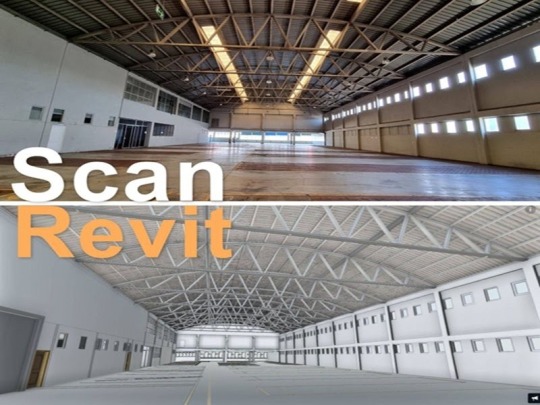
Introduction to Scan to CAD and Point Cloud to BIM Modeling Services:
Scan to CAD involves the conversion of scanned data from physical objects or environments into Computer-Aided Design (CAD) files. On the other hand, Point Cloud to Building Information Modeling (BIM) entails the transformation of three-dimensional point cloud data into intelligent BIM models. These services collectively offer a comprehensive solution for modern design challenges. Scan to CAD processes capture detailed spatial information of physical structures with remarkable precision. This data is then transformed into digital CAD models, providing designers and engineers with a comprehensive virtual representation of the scanned environment.
Enhanced Accuracy and Precision:
One of the key advantages of Scan to CAD and Point Cloud to BIM Modeling Services is their ability to capture intricate details with unparalleled accuracy. By utilizing advanced scanning technologies such as LiDAR (Light Detection and Ranging) and photogrammetry, every nuance of the physical environment can be accurately captured and translated into digital models, ensuring precise representation in the design phase.
Efficiency and Time Savings:
Traditional methods of manual measurement and drafting are not only time-consuming but also prone to errors. Scan to CAD and Point Cloud to BIM services streamline the design process by significantly reducing the time required for data acquisition and model generation. This efficiency translates into faster project delivery timelines and cost savings for stakeholders.
Seamless Integration with Existing Workflows:
These services seamlessly integrate with existing design workflows, enhancing collaboration among architects, engineers, and construction professionals. The compatibility of CAD and BIM models ensures smooth communication and data exchange throughout the project lifecycle, from conceptualization to construction and beyond.
Improved Visualization and Analysis:
By converting point cloud data into intelligent BIM models, designers gain access to powerful visualization and analysis tools. This enables them to explore different design scenarios, conduct clash detection, and simulate real-world conditions with greater accuracy, leading to informed decision-making and optimized design outcomes. Facilitating Renovation and Retrofit Projects:
Scan to CAD and Point Cloud to BIM services are particularly valuable for renovation and retrofit projects where accurate as-built documentation is essential. By capturing existing conditions in detail and creating precise digital models, designers can seamlessly integrate new elements into existing structures, minimizing disruptions and maximizing efficiency.
Supporting Sustainable Design Practices:
The ability to accurately assess existing building conditions and visualize the impact of design changes contributes to sustainable design practices. By optimizing energy efficiency, material usage, and building performance, Scan to CAD and Point Cloud to BIM Modeling Services play a crucial role in creating environmentally conscious and resource-efficient structures.
Enhancing Safety and Risk Mitigation:
Accurate documentation of existing conditions through point cloud scanning reduces safety risks associated with site visits and manual measurements. Moreover, by identifying potential clashes and design inconsistencies early in the process, these services help mitigate construction errors and costly rework, enhancing overall project safety and quality.
Adapting to Evolving Industry Trends:
As the AEC industry continues to embrace digital transformation, Scan to CAD and Point Cloud to BIM Modeling Services are poised to play an increasingly integral role. From augmented reality (AR) and virtual reality (VR) applications to the integration of artificial intelligence (AI) for automated modeling tasks, the possibilities for innovation are vast and evolving.
Conclusion:
Rvtcad represents Scan to CAD, and Point Cloud to BIM Modeling Services represents a paradigm shift in the way architectural and construction projects are conceived, designed, and executed. By harnessing the power of advanced scanning technologies and intelligent modeling algorithms, these services empower designers to push the boundaries of creativity while ensuring accuracy, efficiency, and sustainability in every project they undertake. Embracing these transformative capabilities is not just a choice but a necessity for staying competitive in today's rapidly evolving AEC landscape.
#Scan to cad#point cloud to bim modeling#scan to bim#point cloud to bim#bim services#3d laser scanning#bim laser scanning#scan to revit#as-built drawing#as-built drawings#point cloud to cad
0 notes
Text
Get the Best Laser Scan to BIM Services in Bristol, UK
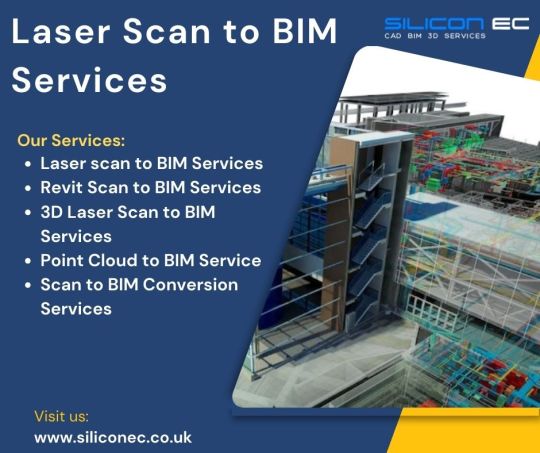
Silicon EC UK Limited offers comprehensive Laser Scan to BIM Services in Bristol, UK, catering to the evolving needs of the construction and architectural industries. Our experienced team of engineers and BIM specialists transforms raw scan data into intelligent 3D models, seamlessly integrating them into the BIM environment. Our team of experienced professionals utilizes state-of-the-art equipment to conduct comprehensive laser scans, generating highly detailed point clouds that serve as the foundation for creating accurate 3D models. Our services empower clients to streamline project planning, enhance construction coordination, and minimize errors, ultimately leading to improved project outcomes and cost savings. Our commitment to excellence, combined with a collaborative approach, ensures seamless communication and transparency at every stage of the BIM project.
Supports and software facility:
Our dedicated workforce comprises steadfast QC heads, proficient Team Leads, and experienced Engineers who possess extensive expertise. Our BIM Services adeptly utilize cutting-edge software, including AutoCAD, Tekla Structure, and Revit Structure, showcasing a commitment to staying at the forefront of technological advancements.
We are a BIM Engineering Company that presents BIM Engineering Services Bristol and other cities covering London, Liverpool, Manchester, York, Leeds-Bradford, Glasgow, Newcastle, Sheffield, and Sunderland.
Choose Silicon EC UK Limited for comprehensive Laser Scan to BIM Services in Bristol, UK, and experience the difference in precision, reliability, and innovation for your next Building project.
For More Details Visit our Website:
#Laser Scan to BIM Services#Revit Scan to BIM Services#3D Laser Scan to BIM Services#Point Cloud to BIM Service#Scan to BIM Conversion Services#Scan to BIM Services#BIM Services#Building Information Modeling Services#Building Information Modeling#BIM#BIM Services Bristol#BIM Engineering Services UK#BIM Services UK#Laser Scan to BIM Services Bristol#Scan to BIM Services UK#CAD Design#CAD Drafting#CAD Drawing#Engineering Services#Engineering Company#Engineering Firm
0 notes
Text
A Feather in Cap: UniquesCADD Receives an Award by “The Great Indian- 2023”

On October 23rd, 2023, UniquesCADD received a prestigious award for delivering high-quality and excellent BIM services in the industry. This added feather in the cap was received under the category of “BIM & CAD Service” by “The Great Indian Entrepreneurship, Business & Startup Awards & Conference 2023”. This milestone was only possible because of the talented team who worked dedicatedly on each project to deliver exceptional services. A big congratulations and thank you to each team member.
#bim services#bim modeling services#scan to bim services#mep bim services#outsourcing bim services#architectural bim services#structural bim services#cad to bim services#point cloud to bim#bim drafting services#revit 3d modeling
0 notes
Text
I can't tell you which laptop to buy
Over the years, I have been asked "Which laptop should I buy?" many, many times. We have now arrived at a point where I can no longer meaningfully answer this question.
In the past, I would have said something like "Get a laptop with enough RAM, and make sure the keyboard, trackpad, and display all work for you. You can't swap out the keyboard, mouse and display like you can in a desktop."
In the past, I would have said something like "Are you just using it for e-mail, Facebook, and Netflix? Are you doing a lot of office productivity stuff? Will you be giving slide presentations? Do you also want to do some light gaming? Do you need an SD card slot for your digital camera? Are you doing video editing/CAD modelling/cinematic 3D rendering?"
It really depends on what kind of laptop you want. You could want a desktop replacement, because you don't have the space for PC. You could want a "luggable" machine that you take from your office to the meeting room or the lecture hall, and back and occasionally to a different location in the trunk of your car. You could want a portable laptop that you keep in a laptop bag, backpack, or briefcase, and sometimes use on your lap or in a café if you are one of these people. You could want a "light" laptop that you carry with you at all times.
I still couldn't tell you which laptop to buy. So many people these days use their phone or a tablet for e-mail, facebook, and netflix that it doesn't really make sense to recommend a small and light laptop. You'd want to be a step above that. So many people use the "cloud" for all their documents and data, so it doesn't make sense for them to think about having a large HDD. If you own a gaming a console and a desktop PC, and you write your e-mails on a tablet, it doesn't really make sense to have a cheap laptop, but it also doesn't make sense to have a big laptop, unless you change your workflow.
Some people still need a CD drive, a large hard disk, or VGA-out, but usually there's a USB-C dock for that use case.
If you never use your laptop anyway, you may as well give Ubuntu a chance. It even runs Steam!
72 notes
·
View notes
Note
Are there any primitives or operations you wished parametric CAD software had?
This is tricky, because parametric CAD is what I learned to design on so its feature set feels "natural".
I don't really think so! Most of the obvious innovations are already covered, SolidWorks can take a model back and forth between parametric and primitives modelling in its own weird way, Inventor has really great design for manufacture features, from what I've seen SolidEdge has done some clever stuff with the solver to help you design parts that are customizable as you go down the chain. Who knows what's going on in NX these days, not me. There's definitely some holes in the sense of individual packages lacking features, but almost anything you can ask has been implemented somewhere, by someone.
Good quality design for manufacture tools really do help, I remember doing sheet metal stuff in Inventor back before they cut off free Inventor access and being able to see your generated sheet and bend allowances so clearly was great, and now even OnShape has pretty solid design helpers.
A thing small shops and hobbyists would probably like is better handling of point clouds and photogrammetry for matching parts, since you're much more likely to be working with parts and projects where you didn't do all the design, I've spent many hours trying to accurately model a mating feature, but even that's like. Pretty good these days, importing 3D scans into an editor is pretty standard and the good CAD packages will even let you pick up holes and clean up point clouds directly from the scan.
I'm not that much of a mech eng, and never really was, my CAD is mostly self taught for simple tasks, real mechanical designers no doubt have better opinions on this, @literallymechanical probably has thoughts on T-splines.
37 notes
·
View notes
Text
Last year, I had the idea to make a Santa Sleigh I could fly beneath my drone. This ended up not happening as my computer was away for repairs. This year, I don't have that problem.

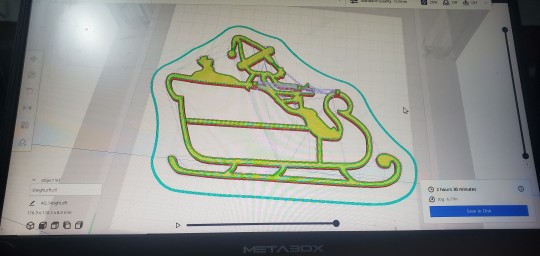
Here's the cad model, drawn up based on some clip art I found.
Everything needs to be outlines to minimise air resistance, and keep it as light as possible.
As you can see, this Santa is being made with an Australian twist.
Here's the Santa in print:

And the first "Boomer" (Kangaroo)

Several hours of printing later, and it was time to stick it together. Wanting strength, I used skewers, even though they were a little thicker than I originally planed for.

I'm balancing the roos on the back, to make sure

It must be wide enough to not confuse the drone's downward sensor.
The morning of Christmas Eve, I awoke to this weather forecast.

I proceeded with final assembly anyway. There were gaps in the clouds, it was only bucketing down some of the time.
The strings need to be equidistant from the balance point, and all the same length.
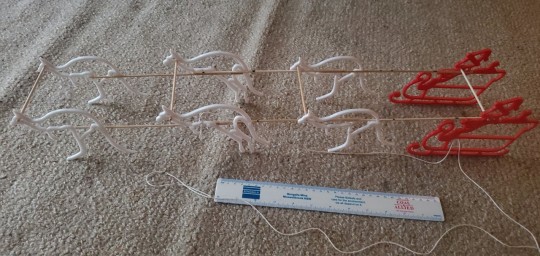
Launch has to be done very carefully. Going to have to fly very smoothly to prevent twisting.
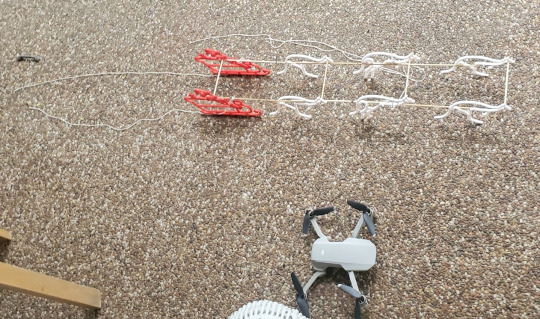
It flies!

I took it down to the park.


Here is the view from the air:


Maybe if the weather holds, there'll be people in the park to see it.
Merry Christmas!
#Christmas#Aussie Christmas#Drones#drone#3d printing#3d printing adventures#mavic mini#santa sleigh#It is about at the limit of what the drone can carry. Even with this weight if i go to long the Drone will start to complain.#it handles tolerably but doesn't sit exactly right. It veers a little and the sleigh easily turns too much. Needs a steady hand#but the drone did cope with a little wind and the small amount of shaking. though the sleigh is about 2/5 of the drone's mass#Idk if anyone younger knows the song about the 6 white boomers. It feel out of favour when the songwriter fell into disgrace
50 notes
·
View notes
Text
What is BIM Architectural outsourcing & Drafting Services?
BIM Architectural Services refer to the practice of subcontracting architectural design and drafting tasks to external firms or professionals specializing in Building Information Modeling (BIM). In this arrangement, architectural firms or companies outsource certain aspects of their projects, such as creating detailed drawings, 3D modeling, or BIM coordination, to specialized service providers.
Outsourcing BIM architectural drafting services offers several benefits to architectural firms:
Cost Efficiency: Outsourcing allows firms to access skilled professionals at a lower cost compared to hiring in-house staff. This can result in significant cost savings, especially for projects with fluctuating workloads or specialized requirements.
Expertise and Specialization: BIM outsourcing firms often have a team of experienced professionals with expertise in architectural drafting and BIM technologies. By leveraging their specialized skills, architectural firms can ensure high-quality deliverables and efficient project execution.
Focus on Core Competencies: Outsourcing non-core tasks such as drafting allows architectural firms to focus on their core competencies, such as design creativity, client relationships, and project management. This can lead to improved productivity and better utilization of resources.
Scalability and Flexibility: Outsourcing provides architectural firms with the flexibility to scale their workforce up or down based on project requirements. This agility enables firms to handle peak workloads, meet tight deadlines, and adapt to changing market demands more effectively.
Access to Advanced Technologies: BIM outsourcing firms often invest in the latest BIM software and technologies to deliver innovative solutions to their clients. By partnering with these firms, architectural companies can leverage cutting-edge tools and workflows without investing in expensive software licenses or training.
Overall, BIM architectural outsourcing and drafting services enable architectural firms to enhance their competitiveness, improve project efficiency, and deliver high-quality designs to their clients. By partnering with experienced outsourcing providers, architectural firms can streamline their workflows, reduce overhead costs, and focus on delivering exceptional architectural solutions.
United-BIM Inc. is a certified SBE/MBE BIM Modeling Services Company based in East Hartford, Connecticut. Our services include BIM Architectural Services, Architectural Drafting Services, 3D Rendering Services Structural Modeling and Detailing (Rebar, Precast, others), MEP-FP Modeling and Detailing, BIM Coordination & Clash Detection Services, Revit Family Creation Services, Underground Utility Locating Services, On-site & off-site Coordination Services, Onsite & virtual meetings participation, Point Cloud Scan to BIM, CAD to BIM Services, BIM for Facility Management, Accurate Shop Drawings Creation, As-built Drawings Services, Electrical Design Services & more.
1 note
·
View note
Photo
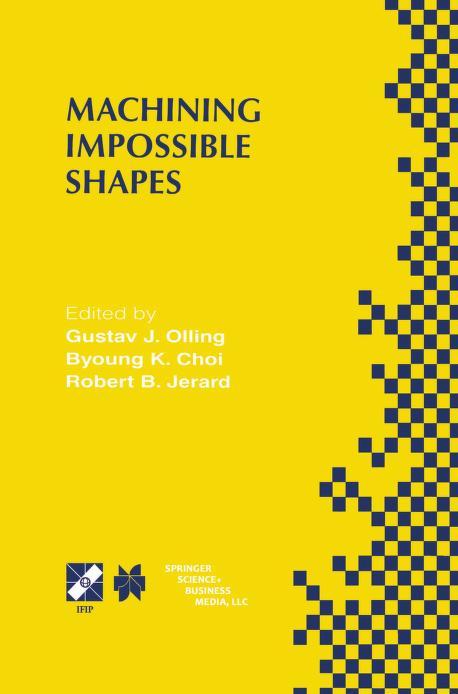
This book is essential reading for researchers and practitioners in computer science, technical managers and software specialists This book provides a comprehensive treatment of the subject of sculptured surface machining in terms of user needs, CAM software solutions and theoretical research results and issues. State-of-the-art capabilities of the best commercial CAM systems are compared to user needs, and advanced academic research is presented. Among the topics covered are the following: Generative NC for dies and molds; 5-axis machining of impellers; Cutting simulation and NC verification; Virtual machining; CAPP for die and mold machining; NURBS-based CNC interpolators
Cutting Molds/Dies from Scan data
Experiences from a Quantum Leap Improvement in Turbine Manufacturing
A Generative Approach for Die Pattern Machining
Geometric Contributions to 3-Axis Milling of Sculptured Surfaces
Efficiency of Multi-Axis NC Machining of Sculptured Part Surfaces
Best-Fit of Sculptured Surfaces
Point-based Geometric Modelling
Virtual Machining and the Manufacturing Model
Virtual CNC with Performance Error Modeling
Fast Simulation of Sculptured Surface Milling with 3-Axis NC Machine
Simulation of Ball-nose End Milling Operations — Selection of Geometric Resolution Parameters
Machining Process Modeling for Intelligent Rough Machining of Sculptured Parts
Bridging the Gap Between Tool Path Generation for Sculptured Surface Machining and Computer Aided Process Modelling Techniques
Automatic Five-Axis CNC Feedrate Selection via Discrete Mechanistic, Geometric, and Machine Model Integration
Milling Simulation with an adaptive Strategy
Deformed Swept Volume Analysis to NC Machining Simulation with Cutter Deflection
Segmentation and Surface Fitting in Reverse Engineering
Surface Reconstruction from Point Clouds
Reverse Engineering Employing a Wrap-Around SurfaceTriangle Set
Manufacturability of Reverse Engineered CAD-models : a case study
https://archive.org/details/springer_10.1007-978-0-387-35392-0
3 notes
·
View notes
Text
Accurate and Reliable 3D Scanning Services in Brisbane by Experts
When precision matters, BJ North Surveyors leads the way with professional 3D scanning services in Brisbane. Specialising in high-accuracy digital mapping, BJ North uses the latest 3D laser scanning technology to deliver fast, detailed, and dependable results for projects across a wide range of industries—including construction, engineering, architecture, and asset management.
3D scanning is revolutionising the way spatial data is captured and analysed. Using advanced laser scanners, BJ North Surveyors can collect millions of data points in minutes, creating accurate digital representations of buildings, infrastructure, and landscapes. This process eliminates guesswork, reduces errors, and improves project efficiency from planning to completion.
Whether you're working on a building renovation, a civil engineering project, or need as-built documentation, BJ North Surveyors provides tailored 3D scanning solutions to suit your specific requirements. Their technology captures even the most complex environments with incredible detail, making it easier to detect issues early, coordinate trades, and support effective design decisions.
One of the standout advantages of BJ North’s 3D scanning services is speed. Traditional surveying methods can take days or even weeks to complete, especially in large or complicated environments. With 3D scanning, projects can move forward faster, saving both time and labour costs.
Another key benefit is versatility. BJ North Surveyors can perform 3D scanning both indoors and outdoors, across a wide variety of surfaces and conditions. From historic buildings to industrial sites, their team handles each job with precision and care. The resulting point cloud data can be used for creating 3D models, BIM (Building Information Modelling), CAD drawings, or virtual walkthroughs.
What truly sets BJ North Surveyors apart is their local expertise, attention to detail, and commitment to delivering reliable results. With years of experience in the Brisbane area, they understand the local terrain, regulations, and challenges, ensuring each scanning project is completed accurately and efficiently.
Clients appreciate their clear communication, prompt turnaround times, and the confidence that comes from working with qualified professionals. BJ North Surveyors is fully licensed and insured, offering peace of mind on projects big or small.
If you need precise, fast, and cost-effective 3D scanning in Brisbane, trust BJ North Surveyors to deliver quality data that powers smarter decisions and better outcomes.
Contact BJ North Surveyors today to discover how 3D scanning can transform your project.
Would you like this content adjusted for a brochure, landing page, or LinkedIn post?
0 notes
Text
Point Clouds in Revit for Comprehensive BIM Modeling
Introduction:
In the realm of Building Information Modeling (BIM), the integration of point clouds into Revit has emerged as a game-changer. Point clouds, generated through laser scanning technology, offer a wealth of spatial data that can revolutionize the accuracy and detail of BIM models. In this article, we delve into the transformative potential of point clouds within the Revit environment, exploring how they enhance the comprehensiveness of BIM modeling.

Understanding Point Clouds:
Point clouds represent a collection of data points in three-dimensional space, capturing the precise geometry and spatial characteristics of physical environments. These data sets are generated through laser scanning devices, which emit laser beams to measure distances and record millions of points within a scene. The result is a highly detailed representation of real-world structures, encompassing everything from intricate architectural features to subtle surface irregularities.
Point clouds serve as digital replicas of physical spaces, offering an immersive and detailed view of real-world environments. Generated by advanced laser scanning devices, these data sets consist of millions of individual points, each representing a specific location in three-dimensional space. Laser scanners emit laser beams that bounce off surfaces within a scene, measuring distances and capturing the spatial coordinates of points in the process.
Integration with Revit:
Revit, renowned for its prowess in BIM modeling, provides a robust platform for integrating point clouds seamlessly into the design process. By importing point cloud data directly into Revit, architects, engineers, and construction professionals gain access to a wealth of information that serves as a foundation for their BIM models.
This integration bridges the gap between the physical and digital realms, allowing for unparalleled accuracy and fidelity in virtual representations of built environments. The integration of point clouds with Revit, a premier software in Building Information Modeling (BIM), marks a significant advancement in the construction industry's digital transformation. Revit's capabilities extend far beyond traditional CAD software, offering a comprehensive platform that facilitates the creation, analysis, and documentation of building designs. With the ability to directly import point cloud data, Revit empowers architects, engineers, and construction professionals to leverage the wealth of information captured through 3D laser scanning technologies.
Enhancing Accuracy and Precision:
One of the primary advantages of incorporating point clouds into Revit is the enhancement of modeling accuracy and precision. Traditional methods of manual measurement and documentation often fall short in capturing the intricacies of complex structures. Point clouds, on the other hand, offer a level of detail that surpasses conventional techniques, enabling designers to create BIM models that closely mirror reality. From as-built documentation to renovation projects, the use of point clouds ensures that BIM models accurately reflect existing conditions, minimizing errors and discrepancies throughout the design and construction process.
Facilitating As-Built Documentation:
In retrofit and renovation projects, accurate as-built documentation is essential for informed decision-making and seamless execution. Point clouds provide a comprehensive record of existing structures, allowing designers to capture precise measurements and dimensions with minimal disruption to ongoing operations. By importing point cloud data into Revit, stakeholders can create as-built BIM models that serve as a reliable reference throughout the project lifecycle. This streamlined approach not only accelerates the documentation process but also mitigates the risks associated with inaccuracies and discrepancies in existing conditions.
Visualizing Complex Environments:
The visualization capabilities of point clouds within Revit are unparalleled, offering designers the ability to immerse themselves in highly detailed 3D representations of physical spaces. Whether analyzing existing structures or conceptualizing new designs, the integration of point clouds provides invaluable insights into spatial relationships, material properties, and architectural nuances. By overlaying point cloud data onto BIM models, designers can make informed decisions regarding spatial layout, clash detection, and design optimization, thereby improving the overall quality and efficiency of the design process.
Streamlining Collaborative Workflows:
Effective collaboration lies at the heart of successful BIM projects, and point clouds play a pivotal role in facilitating communication and coordination among project stakeholders. By centralizing point cloud data within the Revit environment, multidisciplinary teams can work collaboratively on a unified platform, ensuring that everyone has access to the most up-to-date information. This integrated approach fosters greater transparency, reduces rework, and enhances the overall efficiency of project delivery.
Conclusion:
In conclusion, Rvtcad the integration of point clouds into Revit represents a significant advancement in the field of BIM modeling. By harnessing the power of laser scanning technology, designers can create comprehensive and highly accurate virtual representations of built environments. From enhancing accuracy and precision to facilitating collaborative workflows, point clouds offer a multitude of benefits that elevate the quality and efficiency of BIM projects. As technology continues to evolve, the synergy between point clouds and Revit is poised to reshape the future of architectural design and construction.
#point clouds#bim modeling#scan to bim#point cloud to bim#bim services#3d laser scanning#as-built drawing#bim laser scanning#scan to revit#scan to cad#as-built drawings#point cloud to cad
0 notes
Text
Get the Best Building Information Modeling Services in London, United Kingdom

Silicon EC UK Limited is an Engineering Company that provides Building Information Modeling Services in London, United Kingdom. Our BIM Services play a crucial role in improving project outcomes by enhancing collaboration, reducing errors, optimizing designs, and improving overall project efficiency. Our BIM Design Services utilize specialized software and technology to create a comprehensive 3D model that encompasses various aspects of a construction project, including design, planning, construction, and operation. We offer BIM Clash Detection Services that involve meticulous scrutiny of 3D models, pinpointing spatial inconsistencies or clashes that might hinder construction, and enabling proactive solutions in the design phase. Ultimately, BIM Services optimize construction workflows by ensuring smoother project execution, cost savings, and timely delivery of high-quality structures.
Contact us today to discuss your Building Information Modeling Services needs and discover how we can help you turn your architectural dreams into reality.
For More Information Visit to Our Website:
#Building Information Modeling Services#BIM Services#BIM Clash Detection Services#BIM Engineering Services#AsBuilt BIM Services#BIM Family Creation Services#Laser Scan to BIM Services#BIM Coordination Services#CAD to BIM Services#Revit BIM Modeling Services#BIM Services London#BIM Engineering Company#BIM Engineering Firm London#BIM Engineering Company London#BIM#Point Cloud to BIM Services#BIM 3DModeling Services#Building Information Modeling#Revit BIM Services#BIM Design Services#BIM Consulting Services#CAD Design#CAD Drafting#CAD Drawing#Engineering Company#Engineering Firm#Engineering Services
0 notes
Text
UniquesCADD - Leading Outsourcing BIM Services Provider
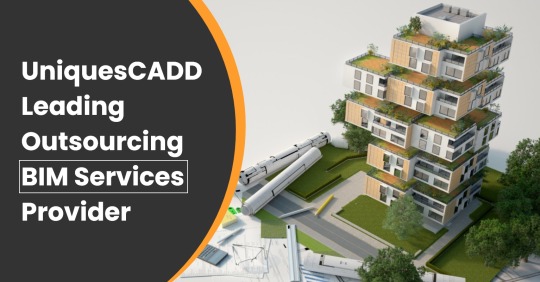
With constant evolution in the AEC industry, UniquesCADD has become a leading outsourcing BIM services provider. Since its foundation, UniqueCADD has earned the name of a renowned BIM service provider also proficient in offering various architectural services with international clientele based in the UK, USA, Germany, and the Netherlands.
Over the years and with a skilled team of professionals, UniquesCADD has been diligent in delivering each project with accuracy and client satisfaction which made them into the top news platforms - OpenPR
#architectural bim services#bim modeling services#bim services#cad drafting services#cad to bim services#pdf to bim services#point cloud to bim services#scan to bim services#bim outsourcing services#bim services india
1 note
·
View note
Text
Expert Scan to BIM Services & Point Cloud Conversion for Efficient Project Execution

At BIM Services, we specialize in high-quality Scan to BIM Services, Point Cloud to BIM Services, and Point Cloud Conversion Services. Our expert team uses cutting-edge technology to convert scanned data into accurate Building Information Models (BIM). Whether you need Scan to CAD services or seek top Scan to BIM companies for your next project, we are committed to delivering efficient and reliable solutions. We provide services tailored to meet the unique needs of architects, engineers, and contractors, ensuring that your project is completed on time and within budget. Explore how our Scan to BIM Services can streamline your design process and improve project outcomes.
0 notes
Text
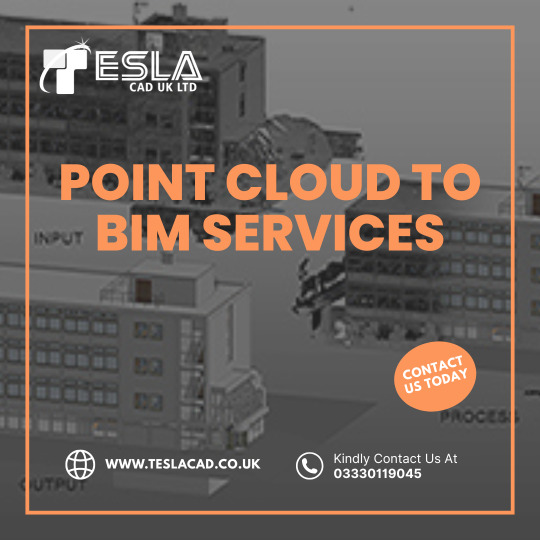
Transforming laser scans into intelligent BIM models with precision and efficiency! ➡️ 🏢 Get reliable Point Cloud to BIM services from Tesla CAD Solutions. Contact us today! 🔗 🚀
0 notes
Text
Enhancing Design Accuracy with Architectural Scan to BIM Services
In the evolving world of architecture and construction, accuracy and efficiency have become paramount. One of the most impactful advancements supporting this evolution is Architectural Scan to BIM Services. This powerful approach transforms physical spaces into precise digital models, enabling architects, engineers, and contractors to work with confidence and precision.
Whether it's for renovation, restoration, or new construction, leveraging Architectural Scan to BIM Services ensures a seamless, data-driven workflow that significantly reduces errors and rework.
What Are Architectural Scan to BIM Services?
Architectural Scan to BIM Services involve the use of 3D laser scanning technology to capture detailed spatial data of existing buildings or sites. This data, often in the form of point clouds, is then converted into intelligent Building Information Models (BIM). These models reflect accurate architectural elements, allowing for informed design decisions, improved collaboration, and smoother construction processes.

Key Benefits of Architectural Scan to BIM Services
Enhanced Accuracy Traditional surveying methods can lead to measurement inconsistencies. Architectural Scan to BIM Services ensure precision by capturing every detail with millimeter-level accuracy, resulting in dependable models that serve as a foundation for all project stages.
Time and Cost Efficiency By reducing the need for repeated site visits and minimizing human error, Architectural Scan to BIM Services streamline project timelines and help avoid costly mistakes, ultimately saving valuable resources.
Improved Design and Planning With access to highly detailed BIM models, architects and planners can make better design decisions, identify potential clashes early, and create more efficient construction plans.
Better Project Collaboration BIM models created through scan data can be shared across teams and stakeholders, fostering a more collaborative and transparent project environment.
Architectural Scan to BIM vs. Scan to CAD Services
While both services convert physical data into digital formats, Architectural Scan to BIM Services offer a higher level of detail and intelligence. Scan to CAD provides 2D documentation, which is useful for legacy projects or simple layouts. In contrast, Scan to BIM delivers 3D models that include metadata, making them suitable for advanced design, clash detection, and facility management.
Applications of Architectural Scan to BIM Services
Renovation and refurbishment projects
Heritage and historical building documentation
Commercial and residential developments
Healthcare and industrial facility planning
Interior design and space utilization
Why Choose Our Architectural Scan to BIM Services?
At ScanToBIM.online we specialize in delivering high-quality Architectural Scan to BIM Services tailored to your project needs. Our team of experts ensures every scan and model meets industry standards, enabling you to move forward with confidence and clarity.
Conclusion
Architectural Scan to BIM Services are revolutionizing the way buildings are designed, analyzed, and managed. By integrating real-world data into digital environments, professionals in the AEC industry can significantly enhance accuracy, reduce costs, and improve project outcomes. Whether you’re dealing with a complex renovation or planning a new build, Architectural Scan to BIM Services provide the precision and efficiency required for success.
0 notes